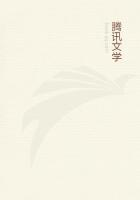It would be reasonable to suppose that were an eye so constituted as to be able to see, say, cumulus masses of warmer air, strata mottled with traces of other gases, and beds of invisible matter in suspension, one might suppose that what we deem the clearest sky would then appear flecked with forms as many and various as the clouds that adorn our summer heavens.
But there is matter in suspension in the atmosphere which is very far from invisible, and which in the case of large towns is very commonly lying in thick strata overhead, stopping back the sunlight, and forming the nucleus round which noisome fogs may form. Experimenting with suitable apparatus, the writer has found on a still afternoon in May, at 2,000 feet above Kingston in Surrey, that the air was charged far more heavily with dust than that of the London streets the next day; and, again, at half a mile above the city in the month of August last dust, much of it being of a gross and even fibrous nature, was far more abundant than on grass enclosures in the town during the forenoon of the day following.
An attempt has been made to include England in a series of international balloon ascents arranged expressly for the purpose of taking simultaneous observations at a large number of stations over Europe, by which means it is hoped that much fresh knowledge will be forthcoming with respect to the constitution of the atmosphere up to the highest levels accessible by balloons manned and unmanned. It is very much to be regretted that in the case of England the attempt here spoken of has rested entirely on private enterprise. First and foremost in personal liberality and the work of organisation must be mentioned Mr. P. Y. Alexander, whose zeal in the progress of aeronautics is second to none in this country.
Twice through his efforts England has been represented in the important work for which Continental nations have no difficulty in obtaining public grants. The first occasion was on November 8th, 1900, when the writer was privileged to occupy a seat in the balloon furnished by Mr. Alexander, and equipped with the most modern type of instruments. It was a stormy and fast voyage from the Crystal Palace to Halstead, in Essex, 48 miles in 40 minutes. Simultaneously with this, Mr. Alexander dismissed an unmanned balloon from Bath, which ascended 8,000 feet, and landed at Cricklade. Other balloons which took part in the combined experiment were two from Paris, three from Chalais Meudon, three from Strasburg, two from Vienna, two from Berlin, and two from St. Petersburg.















